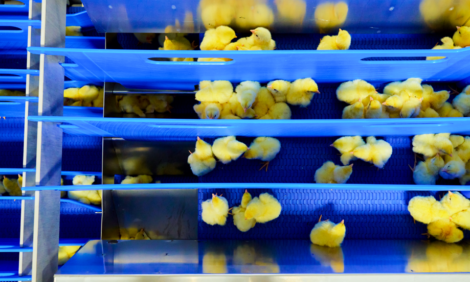



Identifying Single Nucleotide Polymorphisms Conferring Marek's Disease Resistance
Researchers with the USDA Agricultural Research Service have identified genetic markers that have the potential to be used for the selection of breeder lines of chickens with improved genetic resistance to Marek’s disease.Comprehensive breeding programmes along with consumer demand, concentrated management techniques, improved nutrition and control of diseases have resulted in major achievements in the efficiency of poultry production, according to Drs Huanmin Zhang and Mohammad Heidari of the USDA Agriculture Research Service’s Avian Disease and Oncology Laboratory in the summary of a report of research sponsored by the US Poultry & Egg Association.
They explain that unfortunately, various diseases are a constant threat. Of particular concern is Marek’s disease (MD) caused by an alpha herpesvirus, also known as Marek’s disease virus (MDV). MD has been controlled by routine use of vaccination of commercial broiler, breeder, and layer chickens. The first widely used MD vaccine was herpesvirus of turkeys (HVT), also referred to as serotype 3 Marek’s disease virus (MDV). Today, HVT is more commonly used in combination with the serotype 2 non-pathogenic MDV strain SB-1, or with the non-pathogenic, commonly believed as the most effective commercial MD vaccine, serotype 1 strain CVI988/Rispens, or both.
The constant need to develop better MD vaccines, or the need to use multiple vaccines in unison, has been driven by the continual emergence of strains of MDV against which current vaccines provide inadequate protection. Researchers have struggled to develop new innovative vaccines as rapidly as the MDV virus evolves in the field.
Use of genetic markers conferring MD resistance in breeding programmes to augment current control methods for MD is a logical and attractive alternative strategy, say Drs Zhang and Heidari. This strategy is vital to secure continuous success and profitability for the poultry industry and high quality food sources for the general public.
The objectives of their latest study were:
- to identify single nucleotide polymorphisms (SNPs – a particular type of genetic marker) which are responsible for the susceptibility to Marek’s disease, and
- to identify alternative SNPs conferring resistance to Marek’s disease.
It was hoped that the identified SNP(s) will eventually be used in marker-assisted selection to improve genetic resistance in breeder lines of chickens.
A total of 57,636 SNPs were screened. Of these, 172 SNPs distributed over chromosomes 1, 3, 15 and Z were determined to be potentially associated with MD. Following further comprehensive analysis, one SNP out of the 172 was identified with a G allele as the susceptible allele and A as the resistant allele. This SNP is located in LMBRD2 on chromosome Z.
Using these findings, Zhang and Heidari concluded that primary breeding companies may choose to use these markers in the selection process to improve the genetic resistance to MD in commercial chicken lines.
Further ReadingYou can find out more about Marek’s disease by clicking here. |
June 2012









